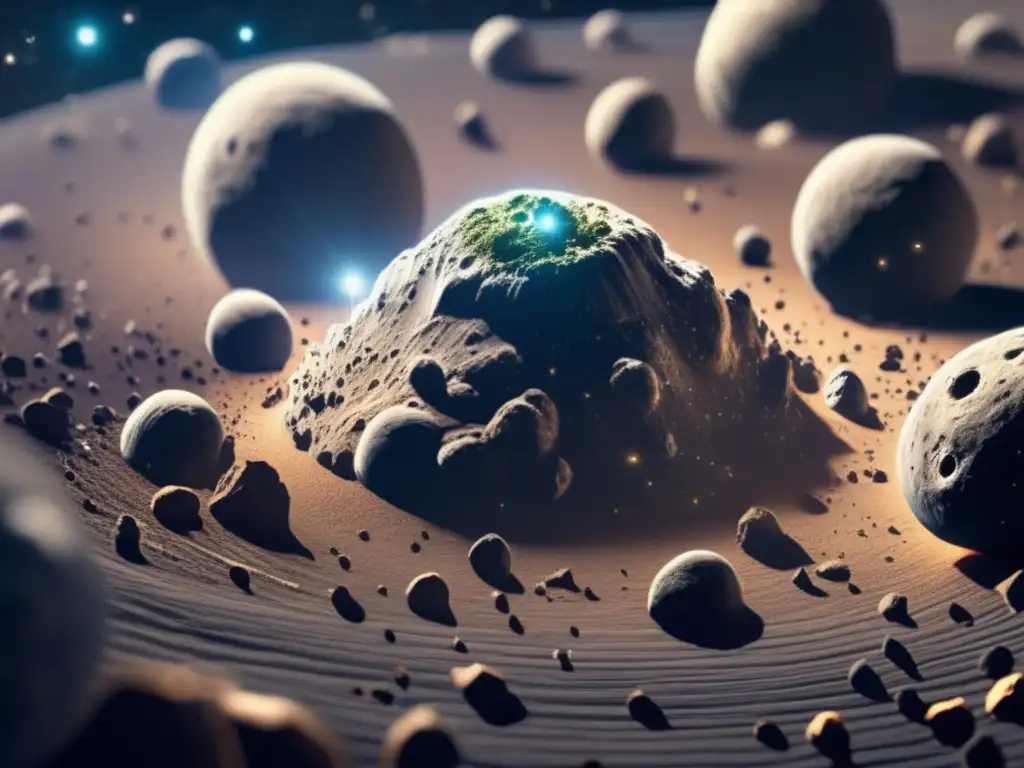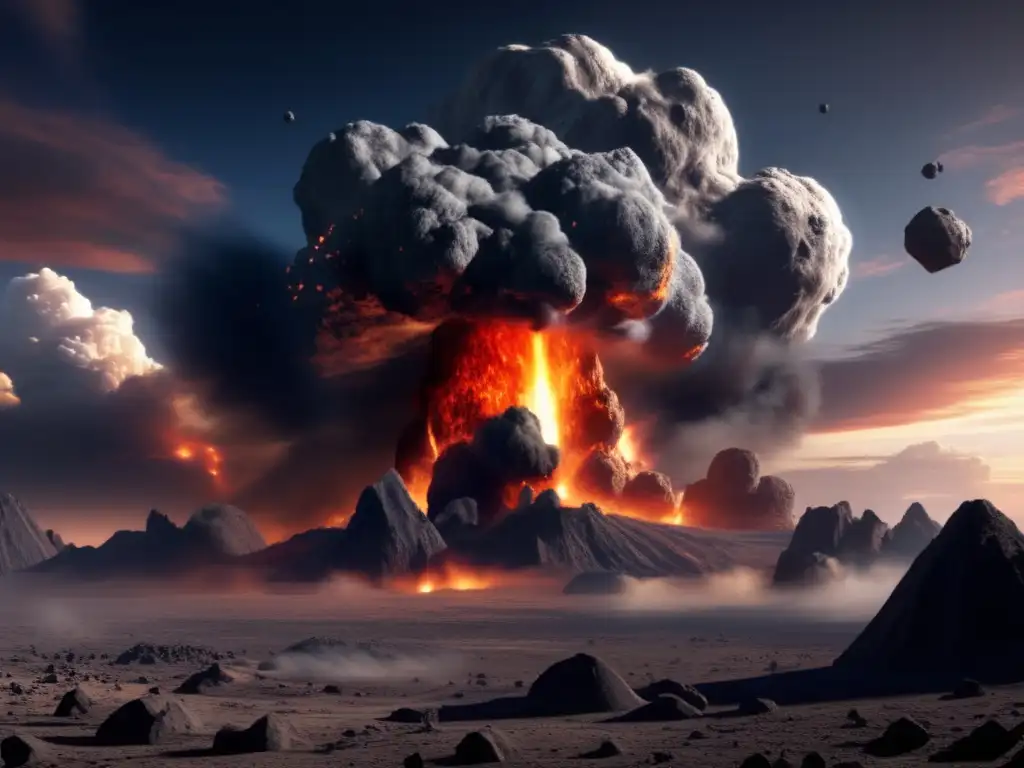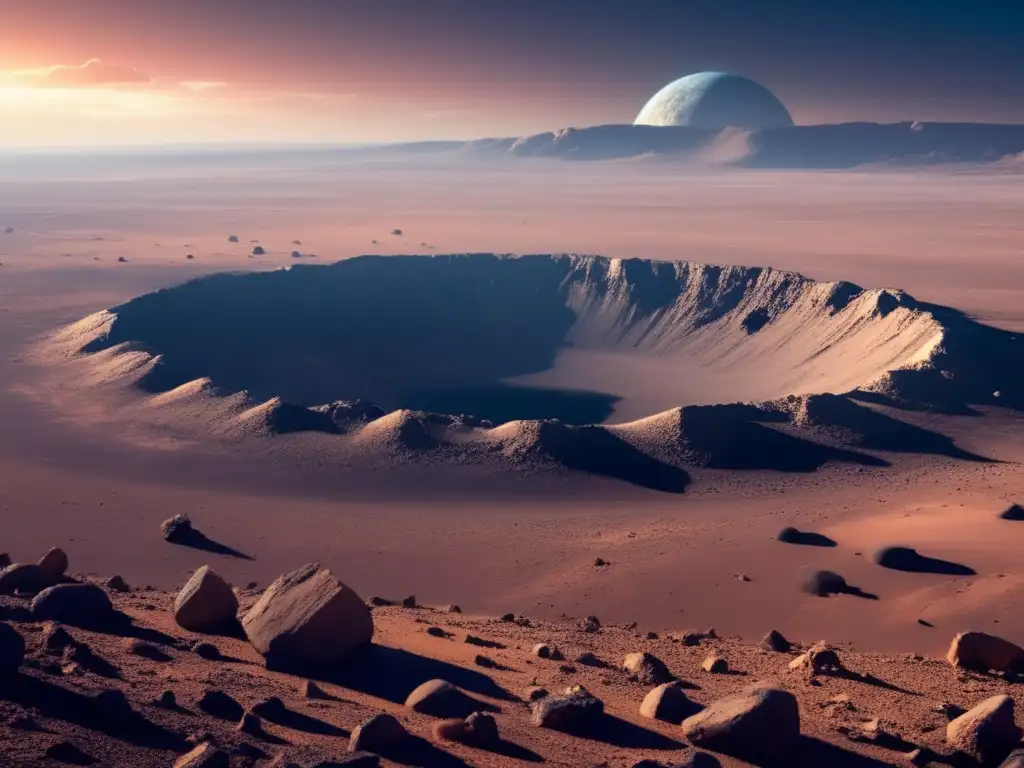Can Life Emerge From Destruction? Asteroids And Panspermia Theory

Introduction
Asteroids, also known as minor planets, are celestial bodies that orbit around the sun. They are remnants of the early solar system and can vary in size from small rocks to large objects over 500 km in diameter. One aspect of asteroids that has captured the interest of scientists and the public alike is the fact that they have been known to impact the Earth. These impacts have caused massive destruction and extinction events, but they have also sparked a fascinating theory – panspermia.
What is Panspermia?

The Theory of Panspermia
Panspermia is the hypothesis that life exists throughout the universe and that it can spread from one planetary system to another on asteroids, comets or other bodies. This theory proposes that the building blocks of life, such as amino acids and organic molecules, may have originated on other planets and arrived on Earth through asteroid impacts. Supporters of Panspermia suggest that this could explain the origins of life on our planet and may also be the reason why there are similarities between life forms found across different planets in our solar system.
The Role of Asteroids in Panspermia
Asteroids play a critical role in Panspermia theory. Many asteroids contain water and organic matter, which are essential components for life. If these asteroids impact a planet, they can potentially transfer these building blocks of life to that planet. In fact, some studies have suggested that the building blocks of life on Earth were brought by asteroids that impacted the planet over 4 billion years ago.
Challenges to the Panspermia Theory
The Panspermia theory is still controversial and has its share of skeptics. Critics argue that the theory does not explain how life originated on other planets or how it could survive the harsh conditions of space during transport.
Asteroid Impacts and Extinction Events

Impact Craters on Earth
The history of asteroid impacts on our planet is well-documented. The Earth bears scars from countless asteroid collisions, resulting in impact craters that can be seen all over the world. These craters range in size from small to massive, with some being over 300 km in diameter.
The K-T Extinction Event
One of the most famous asteroid impacts in history is the K-T extinction event, which occurred around 66 million years ago. This massive asteroid impact is believed to have caused the extinction of the dinosaurs and many other species. When the asteroid hit the Earth, it caused a massive explosion that released energy equivalent to billions of Hiroshima bombs. The impact set off a chain reaction of events that led to the extinction of over 75% of all plant and animal species.
Lessons Learned from Asteroid Impacts
The study of asteroid impacts has provided valuable insights into how our planet has evolved over time. It has also helped us to better understand the potential risks posed by asteroids and the importance of monitoring and detecting asteroids that could potentially impact the Earth.
The Search for Life on Other Planets

Exoplanets and Their Potential for Life
Exoplanets are planets that orbit stars outside of our solar system. Since the discovery of the first exoplanet in the 1990s, thousands of exoplanets have been discovered. Scientists are searching for exoplanets that are located in the habitable zone, where temperatures are just right to support liquid water and potentially life.
The Role of Asteroids in the Search for Life
Asteroids play a significant role in the search for life on other planets. Asteroids can provide valuable clues about the conditions that existed on a planet's surface and the potential for life. They can also be used as a resource for future space missions, providing materials that could be used to sustain human life.
Future Asteroid Missions
Asteroid missions are ongoing and continue to provide valuable information about the origins of our solar system. The future holds even more promise for asteroid research, with plans for missions to return samples from asteroids and even mine them for resources.
Frequently Asked Questions

-
Can life exist on asteroids?
While it is unlikely that complex life forms exist on asteroids, there is evidence to suggest that they may contain organic matter and water – the building blocks of life.
-
Can an asteroid impact cause a mass extinction on Earth?
Yes, asteroid impacts have caused mass extinctions in the past, including the extinction of the dinosaurs.
-
How do scientists detect potentially hazardous asteroids?
Scientists use a variety of methods to detect potentially hazardous asteroids, including ground-based telescopes, space-based telescopes, and radar systems.
-
What is the difference between a comet and an asteroid?
Comets are made up of ice, dust, and rock, while asteroids are primarily made up of rock and metal.
-
What is the most significant asteroid impact in history?
The K-T extinction event, which occurred around 66 million years ago and caused the extinction of the dinosaurs and many other species.
Conclusion
Asteroids have played a critical role in shaping the history of our planet, from massive extinction events to potentially seeding it with the building blocks of life. While the Panspermia theory is still a topic of debate, it has opened up new avenues for research and exploration in our solar system and beyond. The study of asteroids is essential to our understanding of the origins of life and has the potential to provide valuable resources for future space missions. We encourage readers to continue following www.asteroidrealm.com for up-to-date information on asteroid news and research.
Additional Resources

For more information on asteroids, their impact on our planet, and the search for life on other planets, check out the following resources:
- NASA's Asteroid Watch: https://www.nasa.gov/asteroid-watch
- Planetary Society: https://www.planetary.org
- Asteroid Impact Map: https://www.lpi.usra.edu/planetary_maps/AsteroidImpacts/
 When Worlds Collide: Simulating Asteroid Impact Scenarios
When Worlds Collide: Simulating Asteroid Impact Scenarios From Space To Surface: The Journey Of An Asteroid
From Space To Surface: The Journey Of An Asteroid Asteroid Strikes: Catalysts For Geological Change
Asteroid Strikes: Catalysts For Geological ChangeIf you want to discover more articles similar to Can Life Emerge From Destruction? Asteroids And Panspermia Theory, you can visit the Asteroid Impacts category.
Leave a Reply

Articulos relacionados: